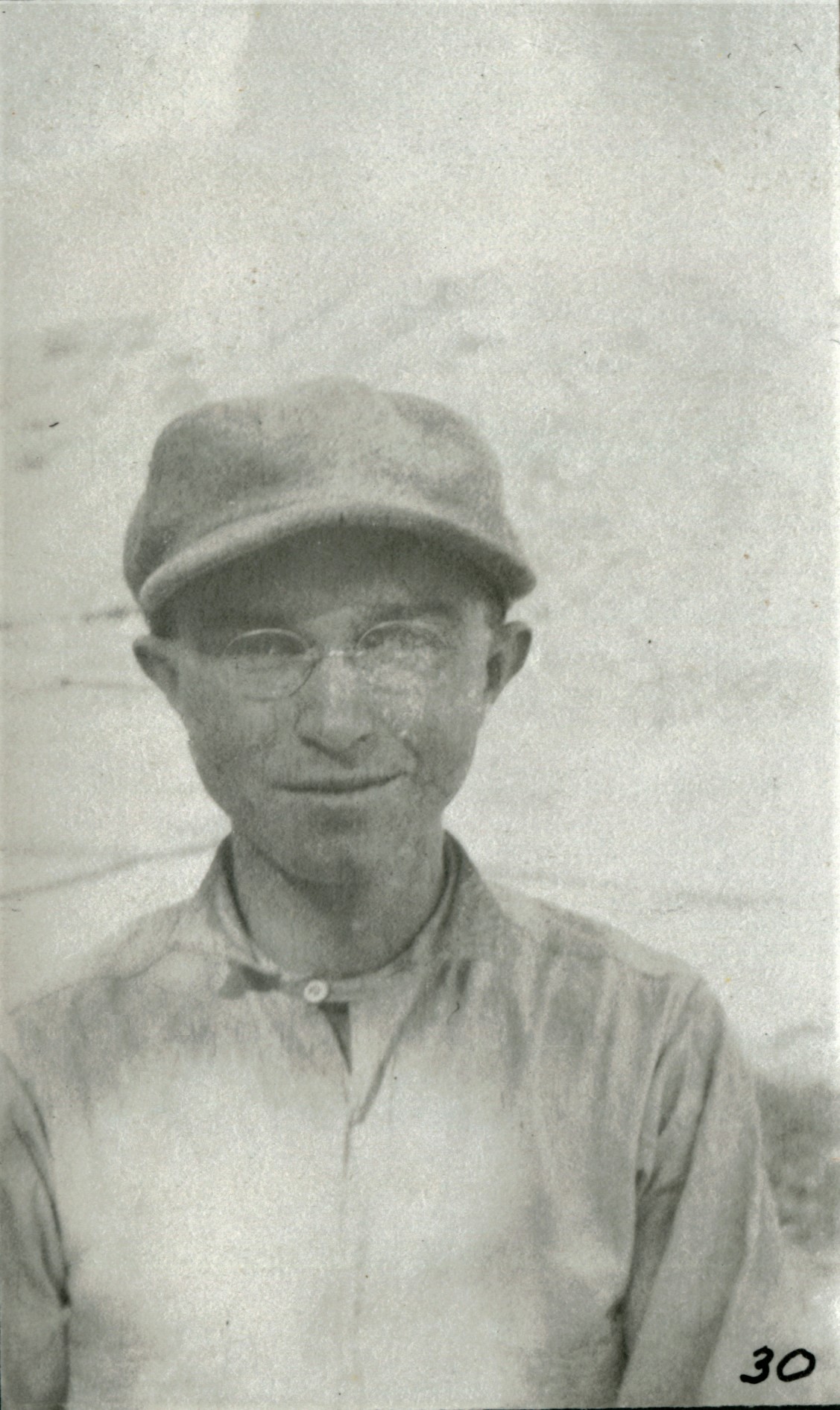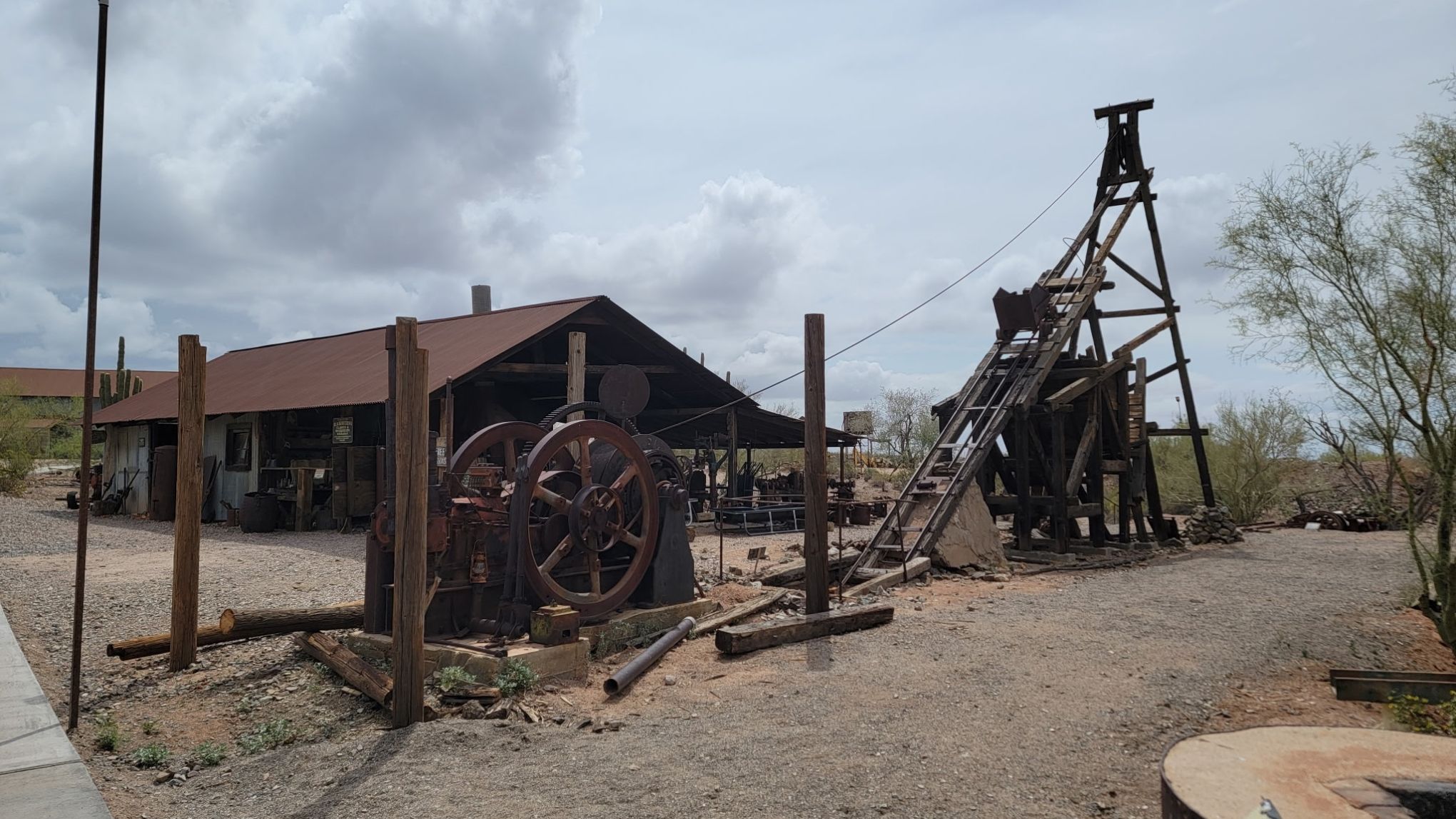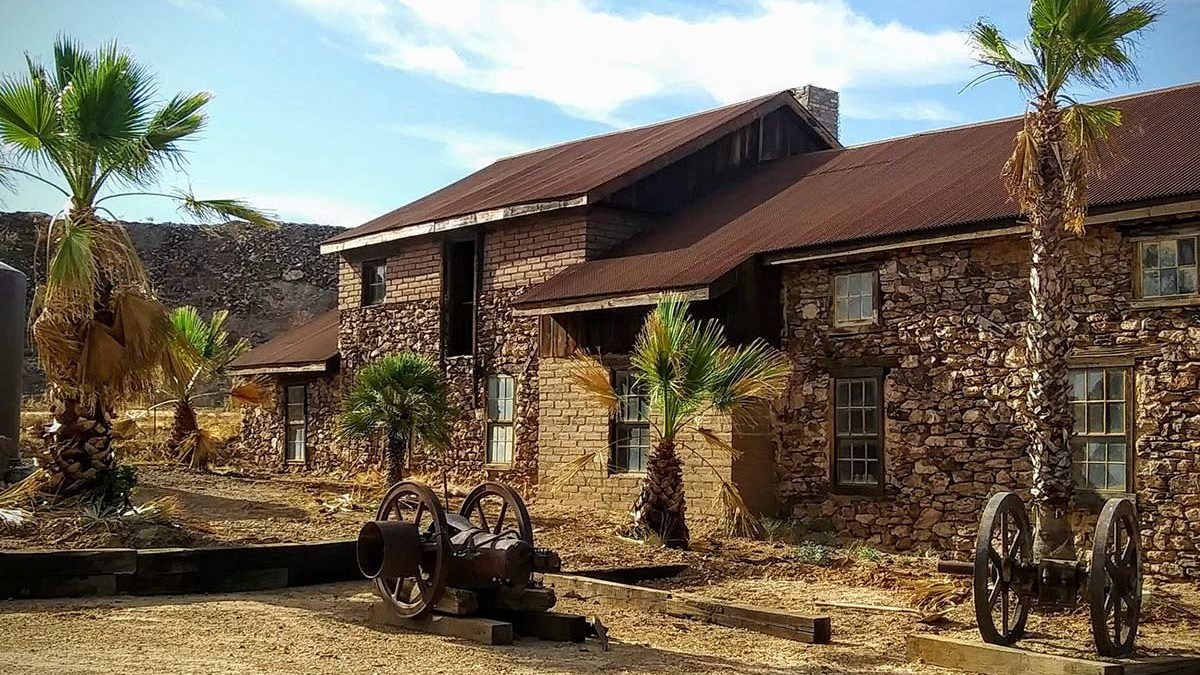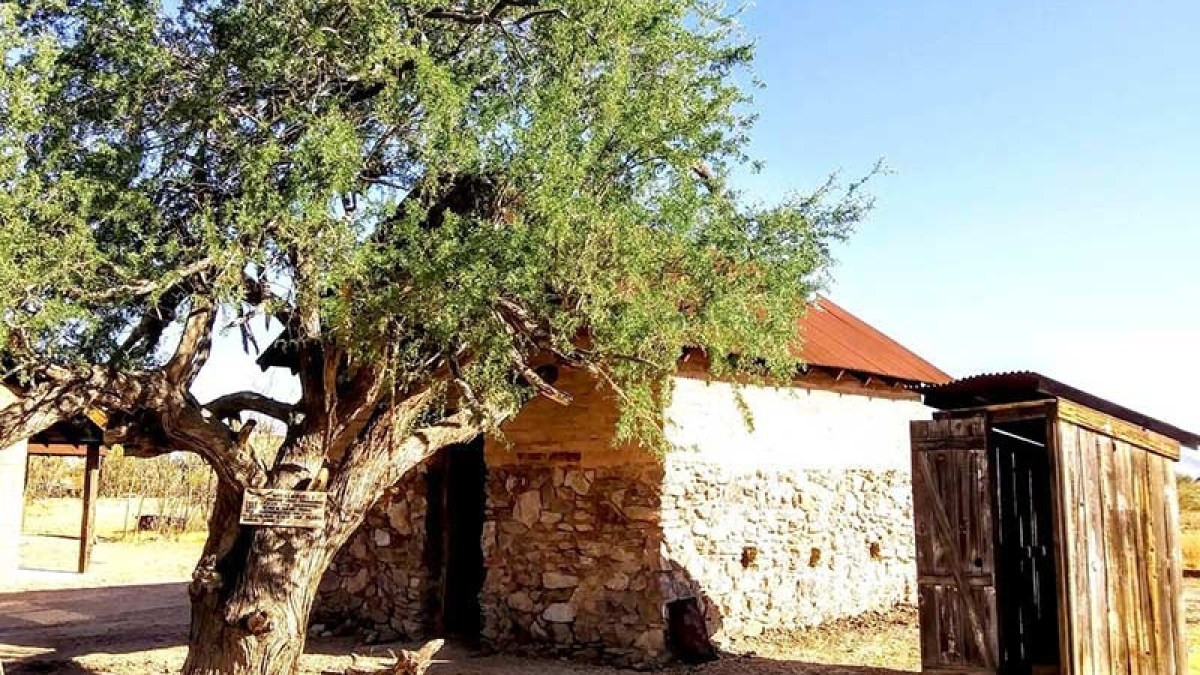The Rise of Vulture City
In 1863, deep in the Arizona desert, prospector Henry Wickenburg followed the flight of scavenging vultures and uncovered a quartz outcropping glittering with gold. What began as a lone discovery soon sparked the birth of Vulture City, a booming mining town that became one of the most important settlements in the Arizona Territory.
The Vulture Mine would go on to produce over 340,000 ounces of gold and 260,000 ounces of silver, making it the richest gold mine in Arizona history. By the late 1800s, Vulture City had grown into a vibrant hub with nearly 5,000 residents. The town included a schoolhouse, blacksmith shop, brothel, general store, saloons, boarding houses, and the infamous Hanging Tree, where 18 men accused of stealing gold were executed. Life here was raw, lawless, and driven by the hope of striking it rich.
The Slow Disappearance of Vulture City
In 1942, during World War II, the U.S. government ordered all non-essential gold mining operations to shut down. Vulture Mine closed, and the town was soon abandoned—left to the mercy of the desert winds and time. For decades, the structures slowly crumbled. By the early 2000s, Vulture City was a ghost town in the truest sense, visited only by the occasional adventurer drawn to its fading ruins and eerie silence.
The Restoration of Vulture City
The Legacy of Vulture City
Today, Vulture City is fully restored. Guests can explore more than a dozen historic structures, walk beneath the Hanging Tree, or tour the town with costumed interpreters. The site hosts educational tours, weddings, paranormal investigations, living-history events, and hands-on experiences that connect visitors to the gritty, gold-fueled days of the American West.
The story of Vulture City isn’t just about boom and bust. It’s about preservation. About saving a town that shaped Arizona’s frontier legacy—and letting its stories live on.

Waldo Twitchell (1912 - 1914)
Assayer • Photographer • Eyewitness to History
Waldo C. Twitchell was a young mining engineer and assayer who worked at the Vulture Mine from 1912 to 1914, during one of its final and most active phases of operation. Just in his early twenties at the time, Twitchell was not only responsible for analyzing ore samples but also served as a meticulous observer of daily life in the booming desert town.
An avid amateur photographer, Twitchell carried a camera alongside his assay tools—capturing candid scenes of miners at work, machinery in motion, and the rugged infrastructure of early 20th-century mining. His photos were often accompanied by detailed descriptions, blending technical insight with personal reflection.
Today, his collection of images and notes serves as an invaluable resource—offering a rare, firsthand look at the people, processes, and built environment of Vulture City at its peak. His documentation remains one of the most complete visual records of the town’s industrial heyday and continues to guide ongoing historical interpretation and preservation efforts.




